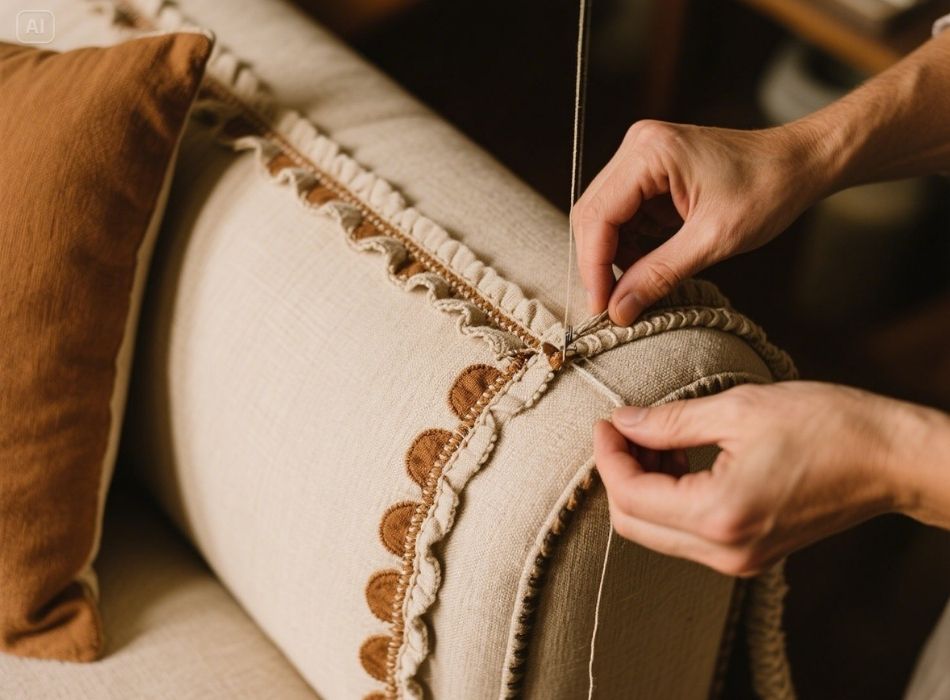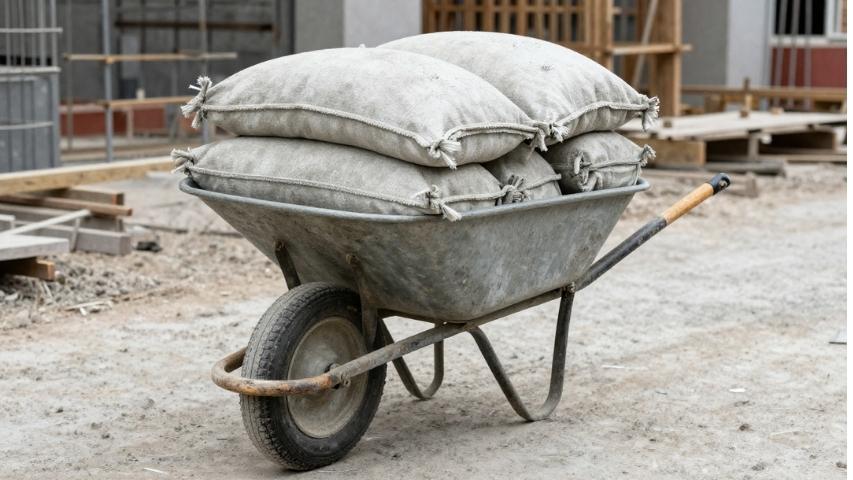Welting is a term commonly thrown around in upholstery and sewing circles, but what does it actually mean? If you’ve ever wondered about the small, decorative trims on furniture or pillows that appear both functional and stylish, you’re likely admiring welting.
This blog will guide you through the details of welting, including its purpose, types, and where it’s used. Whether you’re considering incorporating welting into your next DIY upholstery project or want to understand your furniture a little better, this guide will help you get started.
What is Welting?
Welting, also known as piping, is a sewn-on trim often used on furniture, cushions, and pillows to add both durability and a tailored appearance. It typically consists of a fabric-wrapped cord sewn into the seams of an item, creating a visible, raised edge.
This upholstery technique doesn’t just serve a decorative purpose; it also strengthens the seams of upholstered items, making them less prone to wear and tear over time. Welting can be matched or contrasted with the material to achieve specific design effects, depending on the aesthetic you’re aiming for.
The Purpose of Welting
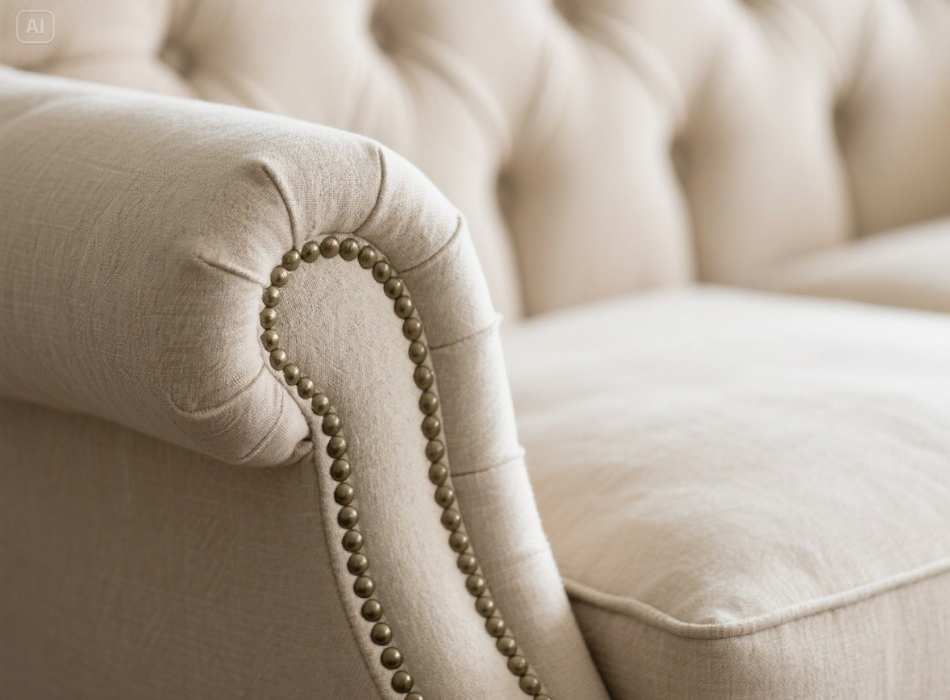
Why do you even bother with welting? While it does enhance the appearance of your furniture or cushions, welting also has many practical applications:
Seam Reinforcement
Welting reinforces seams, making them more durable. It is especially useful in furniture that endures frequent use, like sofas or chairs, where it provides added strength to help seams withstand wear and tear.
Defining Edges
Welting highlights the edges and structure of an upholstered piece, lending a neat, tailored look. This feature can make homes feel more put-together and elevate the overall design of your space.
Aesthetic Customization
Welting allows for creative expression. By choosing contrasting colors or bold patterns for the welting, you can add a pop of personality to your decor. Alternatively, opting for seamless welting in a matching fabric keeps the design understated and elegant.
Concealing Imperfections
Have you ever noticed uneven seams or stitching on furniture? Welting is often used to conceal such imperfections, ensuring the final product looks polished and professional.
Types of Welting

Welting comes in different variations, each serving unique purposes and aesthetics. Here’s a closer look:
1. Single Welting
This is the most common variety of welting, featuring one row of decorative piping or trim. Used for sofas, chairs, and pillows, single welting adds a clean and classic touch. It’s a go-to choice for balanced and simple designs.
2. Double Welting
Double welting consists of two parallel cords instead of one. It’s often seen on more formal furniture pieces or items requiring an elevated, detailed look. The second row of welting provides extra depth and is particularly effective in hiding staples or other manufacturing marks.
3. Decorative Welting
For those who want to make a statement, decorative welting comes in bold colors, patterns, or even unusual textures like leather or metallics. It acts as a visual centerpiece rather than merely blending in with functional seams.
4. Contrast Welting
Contrast welting refers to piping in a color or material that stands out against the base fabric. It’s a popular choice for creating dramatic looks or adding a modern vibe to furniture and cushions.
Where Is Welting Used?
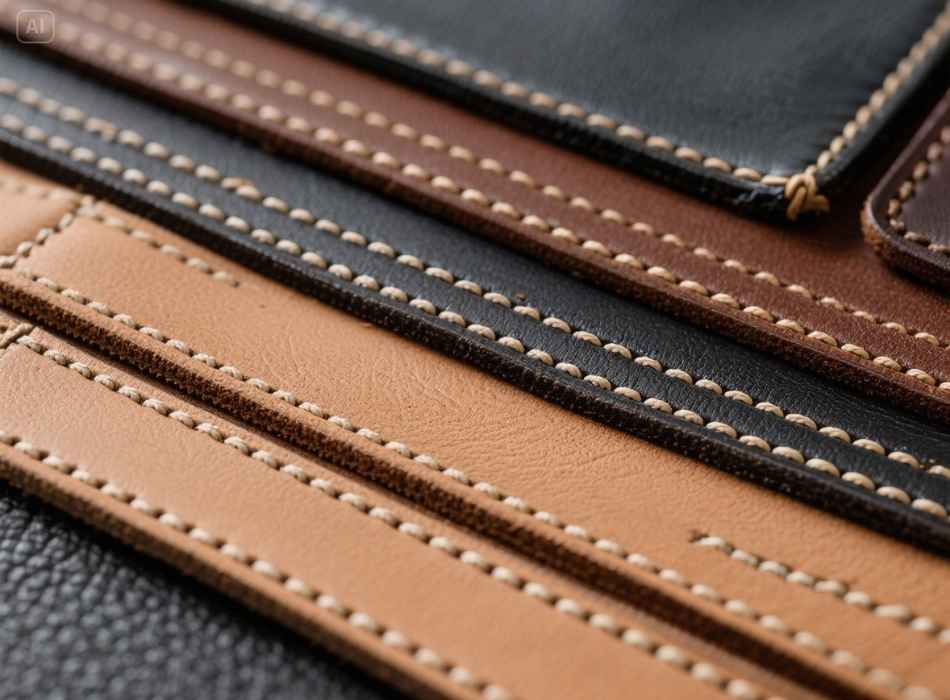
Now that you know what welting is and the different types available, you might wonder where you’ll most often find it. Here are a few typical applications:
Sofas and Chairs
Welting is commonly used on the seams of cushions and along the edges of armrests and backs. Whether it’s a formal armchair or a casual sofa, welting lends a refined, finished appearance to these everyday essentials.
Throw Pillows
Whether on your couch or bed, throw pillows often feature welting to create clean edges. Depending on the desired effect, they may have matching or contrast piping.
Ottomans and Footstools
Ottomans often incorporate welting as a way to enhance the seams and define the edge of a cushion. This is particularly common in tufted or upholstered styles.
Headboards
Upholstered headboards with welting add a touch of sophistication to bedrooms, elevating the furniture from plain to polished.
Custom Slipcovers
Many high-quality slipcovers use welting to create structure and ensure a snug fit. It also prevents edges from fraying, adding durability to these protective covers.
How to Add Welting to Your DIY Upholstery Projects
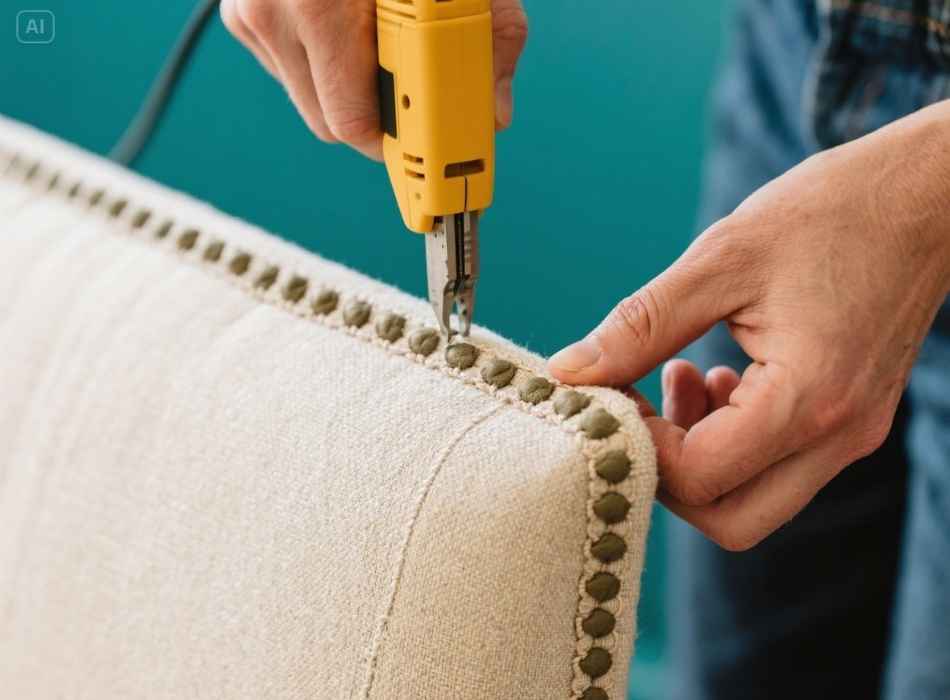
If you’re sold on the idea of using welting in your next project, here’s how to get started:
Step 1: Gather Your Materials
You’ll need fabric, cord, scissors, a welting foot (for your sewing machine), and strong thread. Make sure your fabric matches or complements the upholstery for a seamless design.
Step 2: Create the Welting
Cut strips of fabric wide enough to wrap around the cord and leave a seam allowance. Use a sewing machine to sew the fabric around the cord, creating your welting.
Step 3: Sew It Onto Your Item
When adding welting to cushions or furniture, pin it along the edges of the piece. Then, sew the welting in place carefully, ensuring it stays even and smooth throughout.
Step 4: Finish the Ends
Trim off any excess fabric or cord, tucking and stitching the ends neatly.
Common Challenges (and How to Solve Them!)
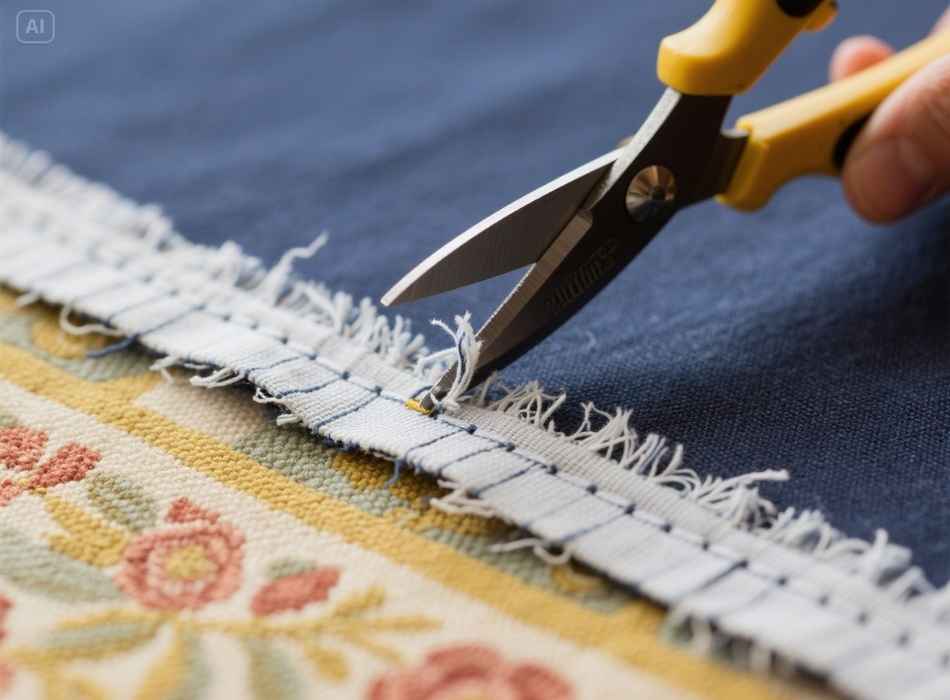
1. Fraying Fabric
Fabric fraying in the welting strips is a common challenge, but this can be avoided by using pinking shears or other fabric-cutting tools.
2. Uneven Edges
Beginners might struggle with uneven application. Using plenty of pins can help keep the welting aligned until it’s sewn securely.
3. Matching Patterns
If you’re using fabric with patterns, align them when wrapping the cord to create a cohesive design.
Why Understanding Welting Matters
Welting might seem like a minor design element, but it’s an essential touch that can enhance the durability, appearance, and uniqueness of upholstered items. Whether you’re customizing your home decor or launching a DIY furniture project, adding welting is a simple way to make your designs stand out.
Are you interested in learning more about upholstery techniques or tackling ambitious DIY projects? Check out our complete tutorial library for tips, tricks, and inspiration.its types to its role in durability and design. Transform your furniture with expert welting tips.







